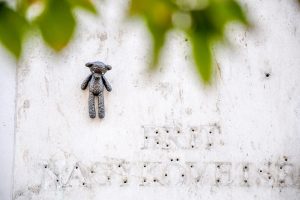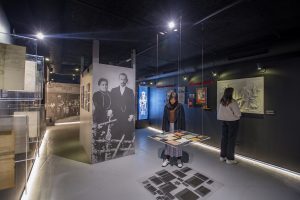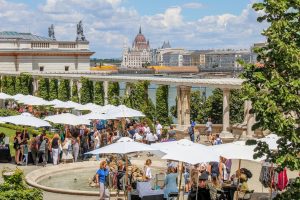Budapest Street Photography Collective, a group of 12 Hungarian photographers, was established last year with the aim of capturing the everyday moments of Budapest in a way we have never seen them before. From student to product designer, people from diverse backgrounds belong to the team, but they all share one passion: street photography. We sat down with two BPSPC members, Imre Szalai and Ádám Temesi to ask them about the mission of the team, the ups and downs of taking street photos in Budapest, and many more.
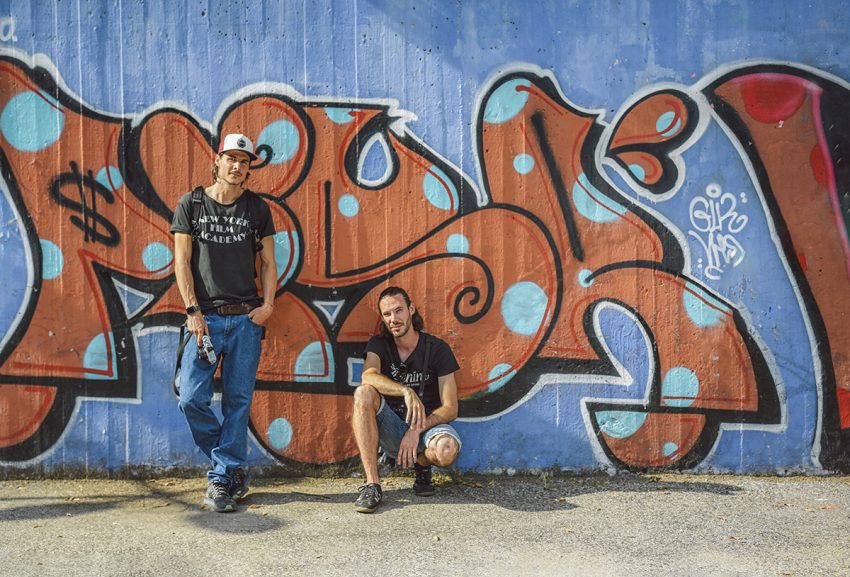
What’s the main goal of BPSPC?
Imi: As a collective, we aspire to take candid photographs in a world dominated by staged images and show what Budapest is like in an uncompromising way. We don’t expect people to pose for our pictures, but it would be great if they didn’t feel threatened when being photographed.
Do you take thematic shots with the team?
Imi: Yeah, before the pandemic we agreed to photograph different districts of Budapest every month, then gather to discuss all the shots we’ve taken and create a zine out of the best ones. We started with District VIII and wanted to continue with District XIII, but the coronavirus hit the country. We have also had some ideas for an annual theme. During the lockdown, for example, everyone was carrying home huge packs of toilet paper…
Ádám: … but Berci and Jácint (BPSPC members – the ed.) had already taken pictures of people carrying piles of toilet paper before the lockdown! We all have a bunch of similar shots, so we decided to make people with toilet paper an annual theme, which later became a thing in quarantine, so we eventually dropped it.
From a photographer’s point of view, what is Budapest like?
Imi: Compared to people living in the countryside, I find Budapest locals much more tense; when they go to the streets, they try to behave. The nights are in strong contrast with this though: people get more relaxed and act in a completely different way than during the day. On the night buses, for example, you can witness many conversations, but at daytime no one would talk to a stranger.
Ádám: It’s also interesting that even though the city is timeless, the people and the vehicles harmonized better with the buildings in the past, while today the image of Budapest is quite eclectic. It happens to me a lot that a car appears and ruins the photo, because it just doesn’t match the vibe.

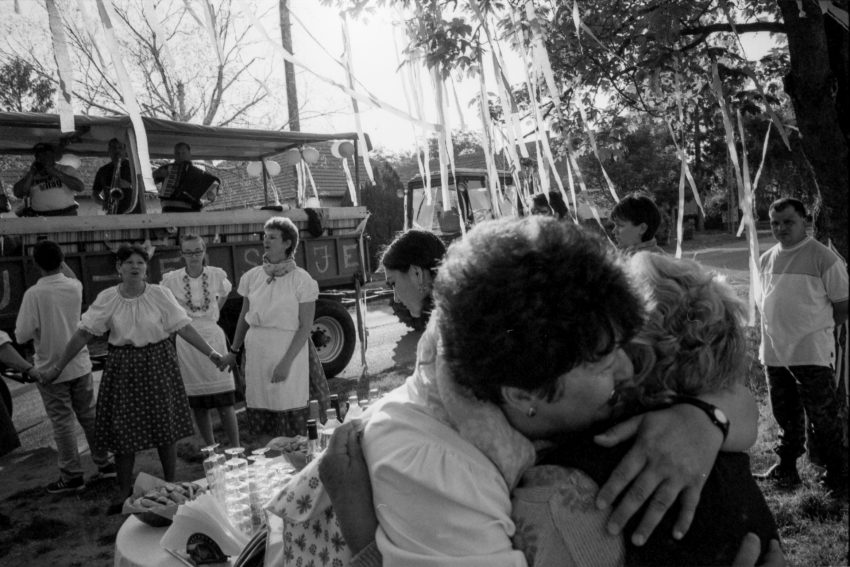
Do you have a favourite street photo story to tell?
Ádám: Two years ago, Bedynski (Krisztián Bedynski, member of BPSPC – the ed.), Imi and I went to the Hortobágy. We were travelling across the village of Sarud on 1 May, when we saw a maypole and a table crammed with booze and cakes, placed in front of a house. The women of the village were gathering at the gate, and we really wanted to take photos of them. One of us went closer to the maypole and the table, and the ladies were like “Gentleman, these are not for sale”. When we mentioned that we just wanted to take some pictures, they said that we should stay, because the musicians were just about to arrive. They gave us palinka, then the band arrived on a tractor. Men in boots and women in apron were dancing, hugging and celebrating while we were capturing everything at close range. No doubt it was the highlight of the trip. We were loading film into the camera like crazy not to miss a moment.
Do you ask for permission before photographing people?
Imi: Not really. At occasions when people are happy such as Labour Day, they don’t mind our presence, because they’re glad to have somebody capturing their joy. Once I took a photo of a guy who wanted to call the police. The way I put the camera in his face wasn’t really polite to be honest…
Ádám: … Tatsuo Suzuki, a Japanese street photographer became known for this arguably ethical approach. We were talking about him and hit the streets a bit later. A guy in a hat walked towards us, and using Suzuki’s technique, Imi put the camera really close to his face without asking. The guy wanted him to delete the picture, but it was shot on film, so Imi refused to remove it from the camera. He wanted to call the cops, but I explained to him that we won’t use his photo anywhere unless it’s okay with him. Eventually, he gave his contact and asked Imi to send him the photo.
Imi, did you send him?
Imi: I did, it’s an awful shot. It happens, we make a lot of mistakes. We’re supposed to do so.
Ádám: We shoot for the moon.


